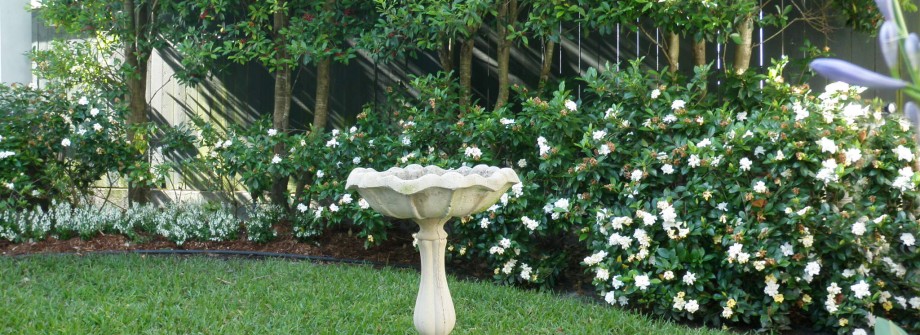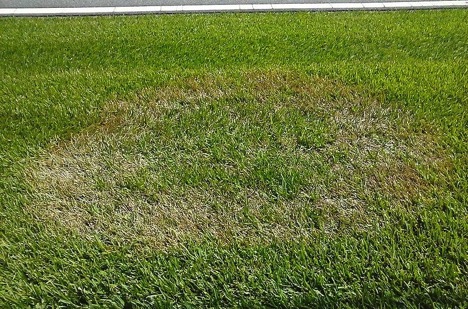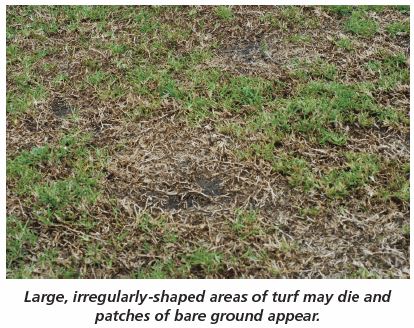Guest article by Peter Goldberg and Rachael Baihn with natural solutions recommended by Exterior Designs, Inc.
You’re doing everything right with your lawn. You plant the best grass seed for New Orleans weather. You follow the proper procedures and do what’s best for your yard. But even the most well-kept lawns are susceptible to disease. Learn how to prevent and overcome these lawn diseases that are common in New Orleans. Because we love our pollinators and want to continue to enjoy healthy fruits and vegetables, we will always recommend natural remedies.
Here are the seven most common lawn diseases in NOLA and how to deal with them to restore your lawn to greatness!
#1: Brown Patch
Brown patch is a fungus that attacks most types of grasses but causes the most damage to Bermuda grass, St. Augustine grass, and centipede grass. It shows up in the spring and fall and is one of the most destructive of all Louisiana lawn diseases. The fungi survive the winter in grass thatch and enter the grass blades in the spring through cuts from mowing. Brown patch is most active when temperatures are in the mid-80s during the day and above 70 at night with high humidity. Grass needs to dry out completely and regularly to stay healthy.
Brown patch looks like brown circles, spreading out from a center point. You can control brown patch by de-thatching — cutting through and removing the low, brown thatch below the green grass blades.
Water early in the day to allow the grass blades to dry. Remove grass clippings, and do not apply nitrogen fertilizer, as this increases disease activity.
#2: Gray Leaf Spot
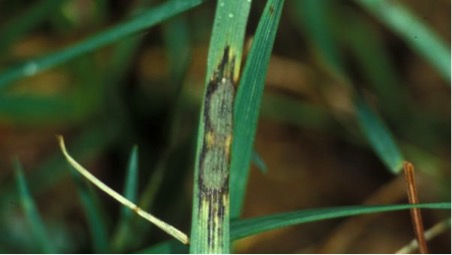
To control gray leaf spot, stay away from high nitrogen fertilizers. Water early in the day and use fungicides with certain properties at 10-day intervals. Exterior Designs always suggests natural remedies over chemical ones. Consider applying sulfur sprays or copper-based fungicides weekly at first sign of disease to prevent its spread.
#3: Fairy Rings
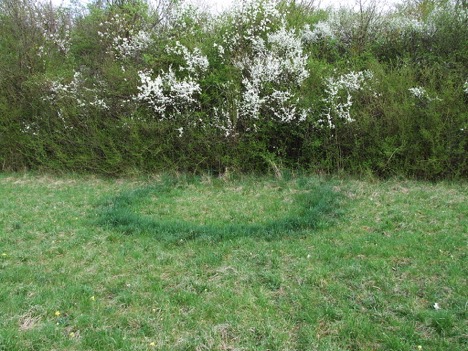
If fairy rings do show up, you may need to remove an 18-inch depth of the lawn and reseed or resod. Chemical control is usually not effective because the fungus grows deeply into the soil.
#4: Dollar Spot
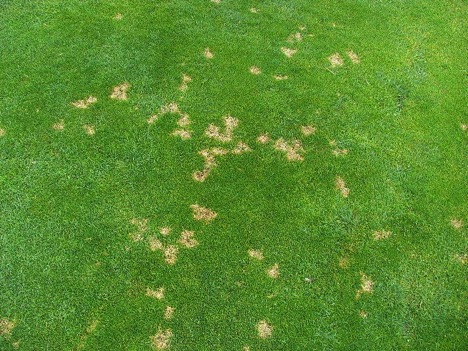
This disease is spread by lawn mowers and other lawn equipment. To control dollar spot, make sure the lawn is getting enough water and nutrients but don’t water during late afternoon or evening. Prevent the buildup of thatch.
The following organic fungicides are recommended for treatment of dollar spot.
- Bonide® Liquid Copper is a natural formulation used to protect everything from turf to vegetables, to flowers and fruits. Mix 1.5 to 6 oz with 2.5 gallons of water and apply to 1,000 sq. ft. For best results, start 2 weeks before problems normally occur. Repeat at 7 to 10 day intervals for as long as needed.
- Physan 20 works on a variety of disease outbreaks affecting lawns, turf and grass. Add 1 Tbsp per gallon of water and spray over problem areas, repeat as needed. One pint treats 6,400 square feet.
#5: Slime Molds
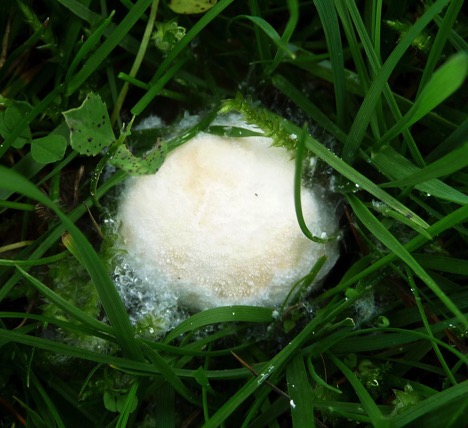
Control usually isn’t necessary. You can break up the spore clumps by sweeping them with a broom or spraying with a solid stream of water. Slime molds disappear as soon as the weather becomes dry.
#6: Leaf Blotch
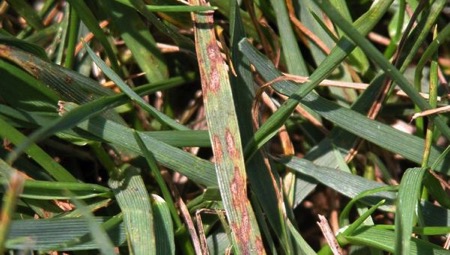
To control, don’t allow grass to stay wet, raise the mowing height during outbreaks and remove and destroy lawn clippings. If you encounter fungal leaf blotch, apply a natural fungicide such as sulfur sprays or copper-based fungicides weekly at first sign of disease to prevent its spread. These organic fungicides will not kill leaf spot, but prevent the spores from germinating.
#7: Take-All Root Rot
This patch disease, known as “take-all,” is caused by a fungus. Take-all shows up as circular to irregularly shaped patches that resemble brown patch disease. It is also mistaken for chinch bug damage or drought symptoms. Affected patches of St. Augustine grass or centipede grass show up as yellow and then die. Severe thinning of the lawn can affect an area of several feet to the entire yard. This is a root disease, and by the time you notice the leaf symptoms, the roots are severely damaged. Take-all is a warm-weather, stress-related disease. You can control take-all by not overwatering, mowing at recommended heights with a sharp blade, maintaining levels of potassium, and avoiding root-inhibiting herbicides. Also, know that few fungicides kill take-all, so it can be difficult to get rid of.
It takes a lot of time and a lot of work to keep your lawn healthy and disease free. Some homeowners give up and turn to artificial turf, which is certainly an option. Others enjoy the satisfaction of keeping their lawn beautiful and overcoming the challenges they face.
Peter Goldberg is a gardening and landscaping writer, and outdoor extraordinaire. He likes to fire up the grill to cook for family and friends, as well as using his organically grown garden produce to create mouth-watering meals.

